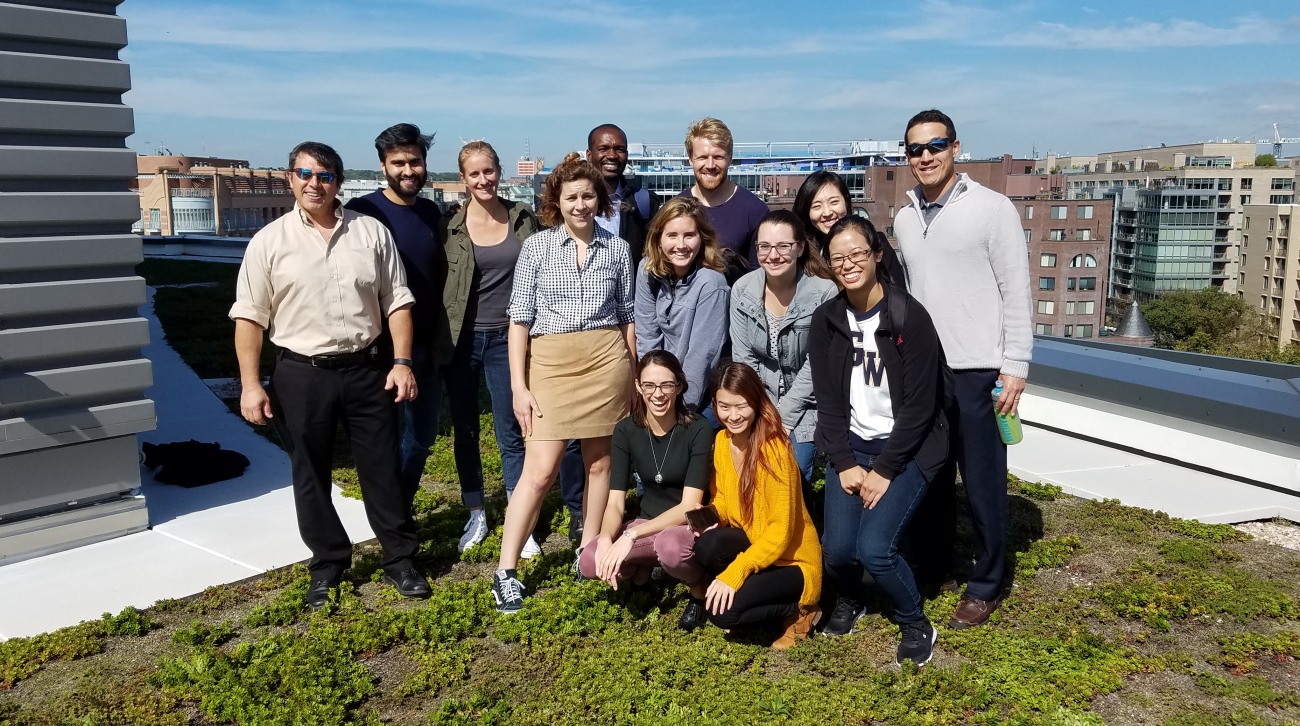Many students who sign up to take the Department of Environmental and Occupational Health’s popular Sustainable Energy and the Environment class don’t realize that it comes with a unique benefit: the opportunity to tour the entire Milken Institute School of Public Health building. Led by Associate Professor Peter LaPuma, who teaches the class to both undergraduate and graduate students, the tours always culminate in a visit to the building’s succulent-covered green roof.
George Washington University is committed to building green, but the $75 million Milken Institute SPH building is the only one in the university to receive the highest green ranking, LEED platinum. LaPuma’s training as an engineer and experience working on sustainable energy projects make him ideally qualified to lead the tour as well as teach the class, and many MPH students identify it as their favorite.
“Because most of the noisy industrial equipment is hidden, I find most people have no idea of the infrastructure and complexity required to make a building healthy and efficient,” LaPuma observes. Soon after the building opened in 2014, he came up with the idea of using its wealth of sustainable features as a way to highlight concepts he teaches about in the elective class (PUBH 6130), which focuses on energy sustainability, including energy conservation, green building principles, and renewable energy. The class also investigates mitigation and adaption policies for climate change, as well as energy and material life cycles, natural resource depletion, water and energy consumption, and air, water, and solid waste pollutant emissions.
In addition to highlighting the building systems and attributes that contribute to the Milken Institute SPH building’s green-ness by enabling it to use less energy and water, LaPuma’s tour shows off health and safety features including its design for suppressing fire and maximizing natural light. He frequently commends John Twomey, our building manager, as “the man behind the curtain” for keeping this complex building running smoothly and safely.
Beyond the green roof, which reduces stormwater runoff and the heat island effect, the tour gives students the inside scoop on a wealth of other green features, including:
- low-flow plumbing, a rainwater collection system and other features that reduce potable water consumption by more than 40 percent over the standard for commercial buildings;
- use of native and adaptive plants for landscaping;
- energy-saving lighting controls in offices, classrooms and conference rooms;
- a heating and air conditioning system that uses green technologies such as active chilled beams and mass air displacement.
“I am convinced that learning about environmental health in a building constructed to maximize health and minimize its environmental impact—qualities we’d like to see in every new building—is inspiring our students to help create a better future,” LaPuma says.


